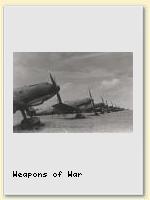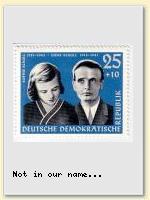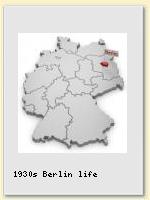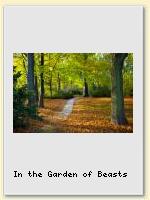
Many of the world’s big cities have their urban parks, from London’s Royal Parks to Central Park in New York and the Bois de Vincennes in Paris; cities need that injection of greenery. And Berlin is no exception. Known as the green lungs of the city, Berlin’s Tiergarten or Großer Tiergarten is a spectacularly wooded parkland brimming with history, culture and natural beauty.
Established as a hunting ground for the Electors of Brandenburg in 18th century and then enjoyed by Kaiser Wilhelm, emperor of the Second Reich, Tiergarten has changed its shape and boundary over the years but has never lost its character. The name literally translates as ‘Garden of Beasts’ – reflecting both the wild boar and deer that originally inhabited the space and the Berlin zoological gardens established in 1844.
With the privacy afforded by acres of woodland, by its winding pathways and secluded areas, by its varied entrances and ways out, it was the ideal place for the rendezvous between ‘hit man’ Paul Schumann and his ‘minder’ Reginald Morgan. They could ensure they were not followed, that there were no more ‘Brown Shirts’ to avoid and their conversation would not be overheard. The large sum of money Paul needed to pay black marketeer, Otto Webber, for vital information from his contacts (one thousand dollars, equivalent nowadays to thirty times that amount) could be handed over without risk of discovery.

Sex in the City
In the 1920s the Tiergarten was home to the Institute for Sexual Science. Founded by Dr Magnus Hirschfeld in the ‘no holds barred’ sexual freedom for which Berlin at that time was notorious, it was at the forefront of studies in sex and transgender sexuality. However Hirschfeld, a homosexual and a Jew, would become a clear target for the Nazi regime. The fate of the Institute and the outcome was inevitable.
Deemed ‘offensive to public morals’, the Institute was raided by the Brown Shirts as part of the purge on banned and seditious authors – the night that books in Germany were triumphantly turned into bonfires. All the scientific papers, records and publications were burnt, lost forever, and the Institute was shut down.
Heinrich Heine, one of the banned authors whose work was burnt the night the Institute was raided, had written in 1834…
‘…when you hear a crashing such as never before has been heard in the world's history, then you know that the German thunderbolt has fallen at last…A play will be performed in Germany which will make the French Revolution look like an innocent idyll.’
And even more prophetically, thirteen years earlier
‘That was but a prelude; where they burn books, they will ultimately burn people also.’
A fate that would ultimately have befallen the Jewish bookseller and his wife, despite their rescue from the Brown shirts by Paul Schumann after he had fled from the killing in Dresden Alley. An incident that first brought Paul and Otto Webber together – the catalyst for the execution of Paul’s plans to kill Reinhard Ernst, his target.

Remember this...
The park is the site for memorials to other such events and individuals in history. Particularly dominant is the Victory column at the major crossways, commemorating the triumphs of the Prussian Empire, and so too is the World War II Russian War Memorial.
The Russian War Memorial is in the form of a soldier, standing on top of a high column sited amidst six capped columns and flanked on either side by a T-34 tank and an ML-20 152mm artillery piece. The citation, in tribute to the victory and in remembrance of the 80,000 Russian lives lost in taking Berlin, reads:
"Eternal glory to heroes who fell in battle with the German fascist invaders for the freedom and independence of the Soviet Union"
Erected within weeks of the end of the war, in the shadow of the place where the red flag was unfurled, in clear sight of the Reichstag and the Brandenburg Gate, the intention was that their people would always know it was the Red Army that prevailed against Germans.
Where it was sited however turned out in the end not to be in the Russian sector of Berlin – restricting their access to it apart from agreed troop ceremonials. Then, when in 1961 the Berlin Wall was built to mark and physically determine the boundary of territory they claimed for their own, the memorial was left outside, further stranded in the West. Inaccessible and unseen for nearly three decades by those in Communist East Germany.

A famous little beast – ‘Knut’
One of Tiergarten’s most famed individuals was Knut the Polar Bear. After being rejected by his mother, Berlin Zoo decided to rear the cub by hand, the first of many battles that would follow Knut through his short life.
Knut debuted at the zoo in March 2007 and ‘Knutmania’ soon took the world by storm. The little cub created a media phenomenon, even appearing on the front cover of Vanity Fair, and drew millions of visitors. Along with ‘Knut’ merchandise, they provided a cash boost of millions of euros to the zoo. A bitter custody case ensued when Neumuenster zoo in northern Germany, where the father resided, claimed ownership.
Neumuenster were paid off and the little bear grew up in Berlin although, following the death of the keeper who had hand-reared him, he grew unhealthily attached to the attention of the crowds. Whether it was because stardom had gone to his head and gone awry or a simple brain infection, at the age of just four Knut suffered a seizure and died tragically.
Now the star bear is displayed in the Natural History Museum in Berlin and is immortalised at the Zoo in a bronze sculpture, ‘Knut the Dreamer’.

Beasts in the Garden
After their evening out, the lakeside in Tiergarten is the place where Kathe Richter confides in Paul Schumann the fate of her lover Michael Klein. He had been a journalist on the left wing Munich Post. Issue after issue the paper had for years relentlessly exposed the hypocrisy, violence and danger of Hitler and his declared plans in his rise to power. Michael had been followed and brutally killed in front of her in the Tiergarten by Hitler’s ‘Brown Shirts’. That is when she tells Paul of the other name for the park – ‘Tier’ is another word for ‘thug’!
He was not the only journalist and activist to die in the Tiergarten and for whom memories would be stirred by visiting the lakeside. In the political vacuum directly after the end of WWI, the reach for power was a battle between revolutionary Communists and the left wing SDP with its ‘thugs’ of the Friekorps (the fore-runner to the ‘Brown Shirts’). The Tiergarten is where Karl Liebknecht and Rosa Luxemburg, founders of the German Communist Party and its paper the Red Flag, met their end.
In the January of 1919 Karl Liebknecht was taken into the woods and shot, Rosa Luxemburg was beaten to death, shot and dumped in the Landwehr canal that runs alongside the park. A tall brick built memorial to Karl Liebknecht now stands by the lakeside and a massive cast iron plate, sited in the water in the canal, marks Rosa Luxemburg’s fate. And of course, despite their deaths, the Red Flag newspaper is still published.
But for the journalists of the Munich Post there is no similar memorial, except the one for Michael Klein in Kathe’s heart.


 Beyond the Book
Beyond the Book






